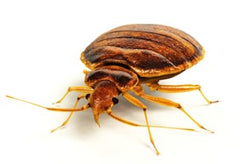- Home
- SHOP ▾
- Store Locator
- Media
- Product Information ▾
- Our Associations ▾
- Warranties ▾
- Advice ▾
- Blog

We all dream every night.
Dreams are a normal part of sleep. Most dreams occur and are the most vivid when we are in REM sleep. REM sleep generally first happens about 90 minutes after falling asleep and each REM stage can last up to an hour. The average adult having five to six REM cycles each night.
During the day when awake our thoughts, ideas and actions are based on logic. When we are asleep and dreaming the logical region of our brain shuts down and our dreams are driven by the emotional side of our brain, with about two thirds of our dreams occurring in pictures.
“During REM sleep many of our muscles relax completely and this prevents us acting out our dreams. If this system doesn’t work properly, we may try to act out our dreams, especially if the dreams involve strong emotions.” – Sleep Health Foundation
If you are in a positive mind set and have a good day, you are more likely to have a good dream. If you are depressed or anxious this may compromise your sleep quality and contribute to bad dreams.
Nightmares are vivid scary dreams. They tend to wake you up. They may often also stop you going back to sleep.
For children they are often thought of as part of growing up but they can also be set off by things such as a stressful event in life, trauma, medications, substance abuse or a mental or physical illness.
According to the Sleep Health Foundation of Australia
“10% to 50% of children have them. The number of adults who have nightmares is much less, from 2.5% to 10%”
If you are experiencing vivid scary dreams or nightmares regularly you may not be getting enough sleep at night or wake up feeling tired and stressed. If this is occurring regularly counselling may help.
Commonly it is thought that dreaming allows us to analyse and consolidate memories, skills and habits. Assisting us in our ability to respond to situations in our daily lives.
Other beliefs include dream’s acting as a creative muse, inspiring and facilitating our creativity. As a therapist, helping connect our feelings in such a way that we would not while awake. Or as a way of helping us deal with a threat or problem.
“One of the areas of the brain that’s most active during dreaming is the amygdala. The amygdala is the part of the brain associated with the survival instinct and the fight-or-flight response.” healthline.com
Although there is still a lot to be learnt about their cause and function, they are part of our regular sleep cycle which is vitally important for our everyday health and well being.
Sleep Well, Live Well

Many things can interfere with us getting enough sleep. A late night movie, completing a work assignment or a night out with friends.
For an adult the recommended amount of sleep for our bodies to function effectively is 7-9 hours a night. Sleep debt is where there is a difference in the amount of sleep we should be getting versus the amount of sleep we are actually getting.
Short term sleep debt can result in a lack of concentration, irritability and poor judgement, affecting our ability to learn and complete tasks, and increasing the likelihood of accidents or errors to occur.
As sleep is restorative, longer term a chronic lack of sleep can contribute to health problems including obesity, diabetes, high blood pressure and a weakened immune system. You may also be more susceptible to experiencing anxiety and depression.
If you have had a late night or are feeling tired a nap may help during the day, reducing fatigue, increasing alertness, improving your mood, performance and reaction time. A nap may also help you prepare for and be able to better cope with a late night out, shift work or a long drive.
Ideally a nap should only be 15-30 minutes long. This will ensure that when you wake you are still in the lightest stage of non-REM sleep. Any longer, where you enter the deeper stages of sleep you risk waking up with what is known as sleep inertia. Feeling groggy and perhaps more tired and with less energy than before your nap.
Many of us enjoy a weekend sleep in, catching up on sleep lost during the week. Whilst it may seem a good idea and make you feel less tired, if you are sleeping in do not sleep for more than 2 hours longer than normal. Sleeping late into the morning can further disrupt your sleep patterns by making you feel less sleepy when you should be going to bed at night.
Sleeping in or taking naps may make us feel less tired in the short term but they are not a solution for long term chronic sleep debt and the potential long-term effects on your health.
Avoiding sleep debt, and providing your body with the sleep it needs requires a regular sleep routine and good sleep hygiene habits.
It may take time to get into a routine but by following good sleep hygiene and a regular sleep routine you will regain the energy you have been lacking and it will benefit your long term health and wellbeing.
Sleep Well, Live Well

If we have had a bad night’s sleep it can be hard to concentrate, our reaction time may be delayed, we may struggle to learn new things or recall our memories and not make sensible decisions.
After a good night’s sleep we feel energised, our brain is alert and we are able to clearly focus, learn, be creative and remember information.
Research shows that sleep plays an important role in learning and the formation of memories.
According to a resource from the Division of Sleep Medicine at Harvard Medical School
“Research suggests that sleep helps learning and memory in two distinct ways. First, a sleep-deprived person cannot focus attention optimally and therefore cannot learn efficiently. Second, sleep itself has a role in the consolidation of memory, which is essential for learning new information.
Although the exact mechanisms are not known, learning and memory are often described in terms of three functions. Acquisition refers to the introduction of new information into the brain. Consolidation represents the processes by which a memory becomes stable. Recall refers to the ability to access the information (whether consciously or unconsciously) after it has been stored.”
While we are sleeping different stages of our sleep play a role in forming different types of memories and consolidating what we have learnt during the day Research indicating procedural memory, or remembering how to do things such as riding a bike is affected by REM Sleep.
Ensuring you get enough sleep is therefore important to our ability to learn, remember how to do things and make good decisions.
On average, an adult should get between 7-9 hours of sleep a night.
If you are not sure how much sleep you or a member of your family should be getting based on age the Sleep Health Foundations article how much sleep do you really need gives a good guide.
Sleep well, live well

Sleep is vital to our everyday well being. Getting the right amount of regular sleep will make you feel more energised and motivated, helping you to achieve other goals that you might have for this year, such as doing more exercise,
Try to go to bed and wake up at the same time. It will help create a natural rhythm, and sleep-wake cycle for your body.
Also ensure you are getting the recommended amount of sleep for someone your age. For an adult this is 7-9 hours a night. For a guide on the recommended sleep time for different ages check out https://www.sleephealthfoundation.org.au/how-much-sleep-do-you-really-need.html
Look at what can influence the quality of your sleep, and work on making changes where needed.
“Another reason people get lower-quality sleep following alcohol is that it blocks REM sleep, which is often considered the most restorative type of sleep. With less REM sleep, you’re likely to wake up feeling groggy and unfocused.” - sleepfoundation.org
Ensure your bedroom offers the best possible sleep environment
“A cool 16-18°C (60-65°F) is thought to be an ideal temperature in a bedroom. Temperatures over 24°C (71°F) are likely to cause restlessness, while a cold room of about 12°C (53°F) will make it difficult to drop off.” - Sleep Council UK
It may take a little adjustment for you to get into a new routine, but just remember that if you are getting the right amount of sleep regularly you should feel better and have more energy for the things you want to achieve.
Sleep well, live well

Every year billions of people are travelling and each trip they take the risk of bringing home a bed bug infestation.
Bed bugs love to hitchhike on luggage.
Found worldwide and an increasing problem in Australia and New Zealand, be sure to know what to look for these holidays or whenever travelling to ensure you and your family are protected from their nasty bites.
 Small in size, they are attracted to warmth, and are most active at night biting areas of exposed skin while sleeping. Their bite causing an allergic reaction which is displayed on the skin as itchy red welts usually not felt until some minutes or hours after the bite.
Small in size, they are attracted to warmth, and are most active at night biting areas of exposed skin while sleeping. Their bite causing an allergic reaction which is displayed on the skin as itchy red welts usually not felt until some minutes or hours after the bite.
Bed bugs have small, flat oval bodies. Adults are brown in colour, reddening after feeding. Despite common misconceptions that they are too small to see, fully grown they are about 4-5mm in length, small but visible to the naked eye.
Hiding in nooks and crannies they are primarily nocturnal, emerging in the middle of the night to feed on those sleeping. It is therefore, often not the bed bugs, but tell-tale signs of their infestation that may be seen first. Little brown or black dots found on linens or the mattress itself.
When booking a hotel room, you can:
If you have discovered bed bugs or evidence that would lead you to suspect their presence, alert the hotel staff immediately, do not stay in that room, and strongly consider finding a new hotel all together.
There have been reported cases of Bed Bugs in transit. After all they love to hitchhike on luggage and clothing. Having a hard shell suitcase can assist in eliminating the areas in which a bed bug can hide and it can easily be cleaned with an alcohol wipe after your flight. If you do see any signs of bed bugs while travelling let the flight attendant on your plane or tour guide know as soon as possible.
When you get home wash all clothes you took on the trip in hot water including the ones that might be clean or you have worn on the way home. Vacuum and check your luggage for any signs of bed bugs and then store them safely away from your bed.
Use Protect-A-Bed® Allerzip Mattress Encasement's on your beds for Fit ‘n’ Forget protection.
Not only providing peace of mind against bed bugs and dust mite allergens they help protect your mattress investment from everyday spills and stains.
The Protect-A-Bed® BugLock® system has a dust-proof flap and tamper-proof SecureSeal® making the mattress or pillow bed bug entry and escape proof, whilst also ensuring allergens can’t become airborne. Simply Fit'n'Forget® by laying a Protect-A-Bed® fitted mattress protector on the top for easy removal and regular washing with other bedding.
Sleep Well, Live Well